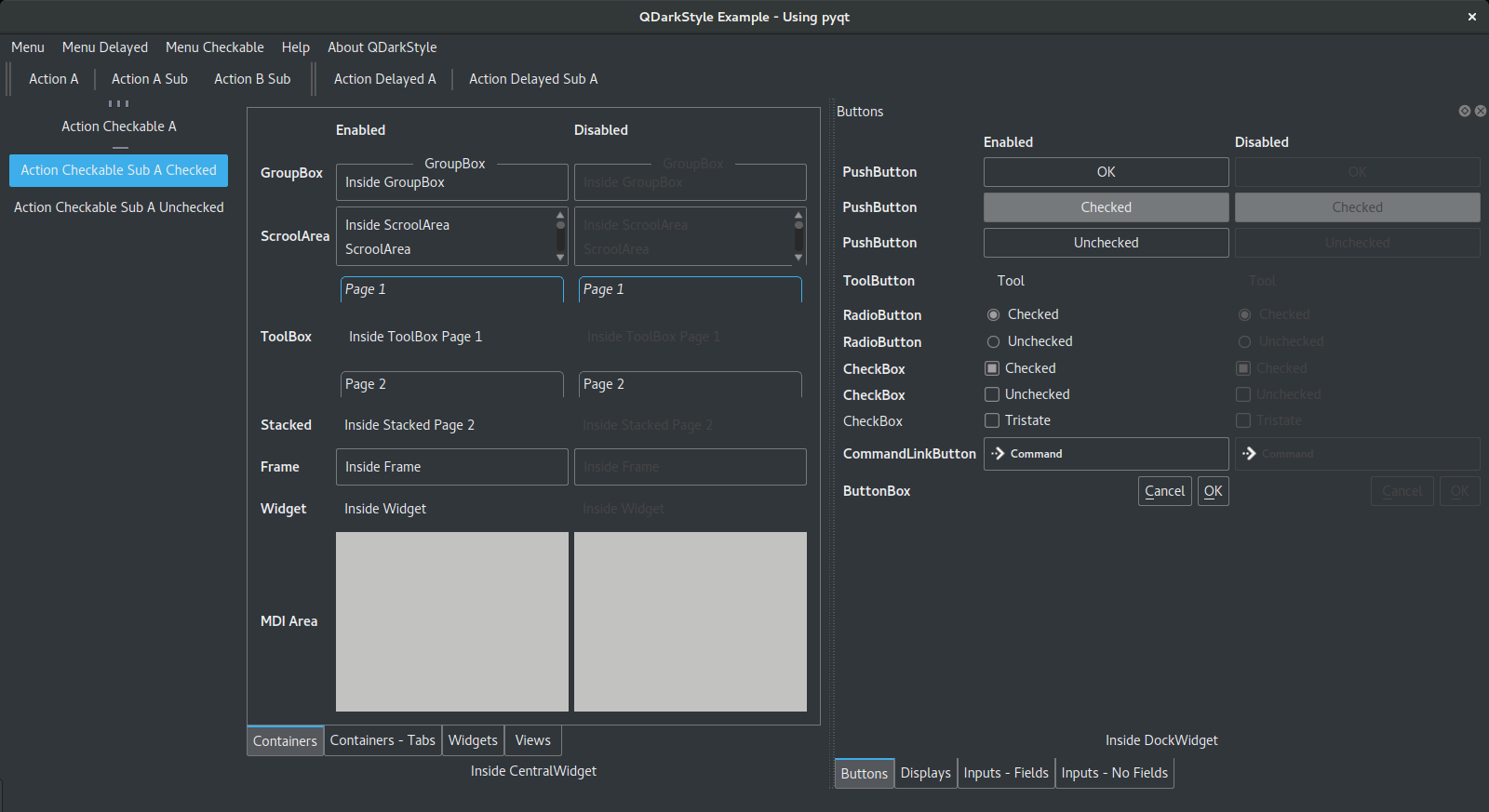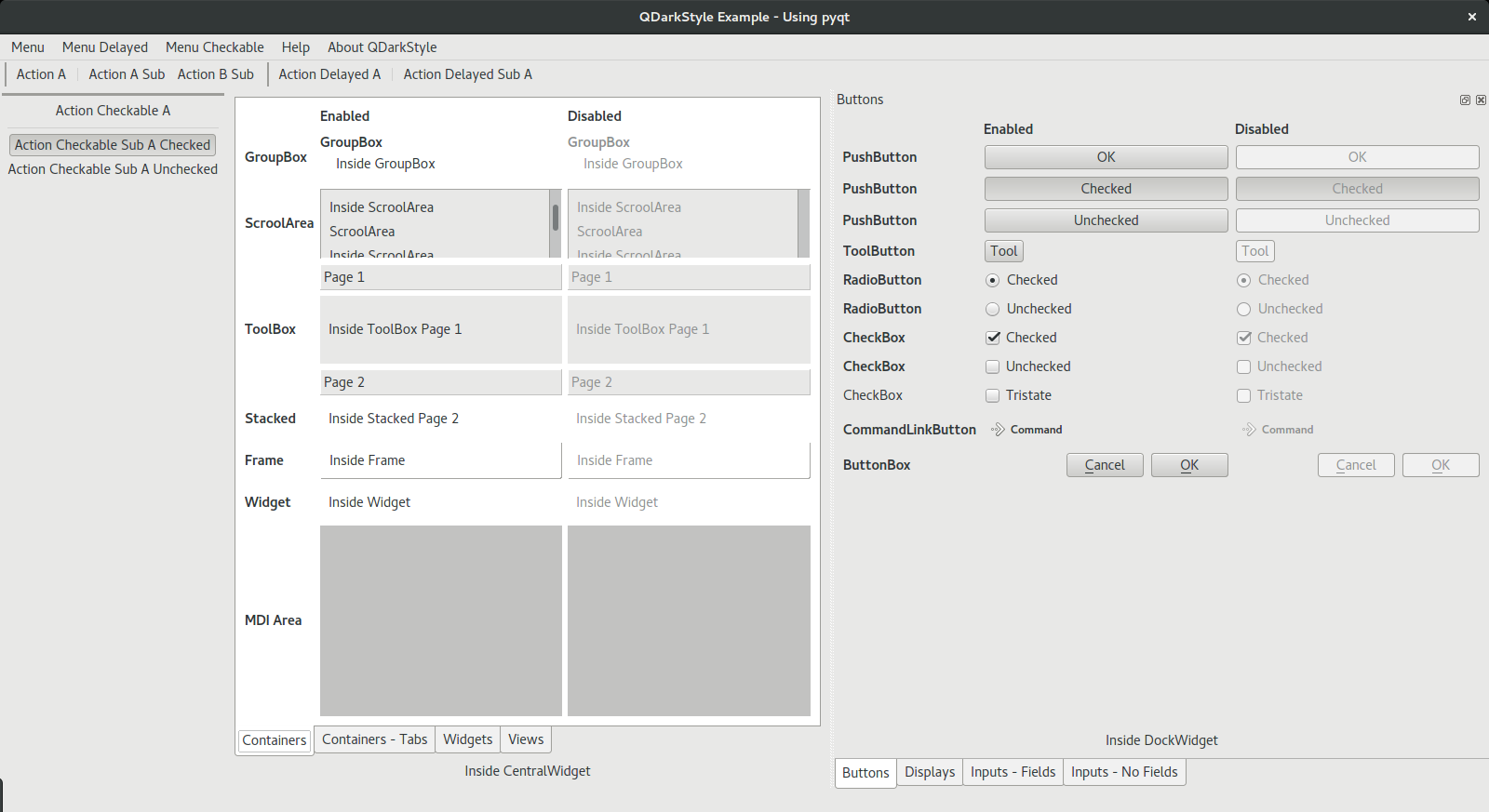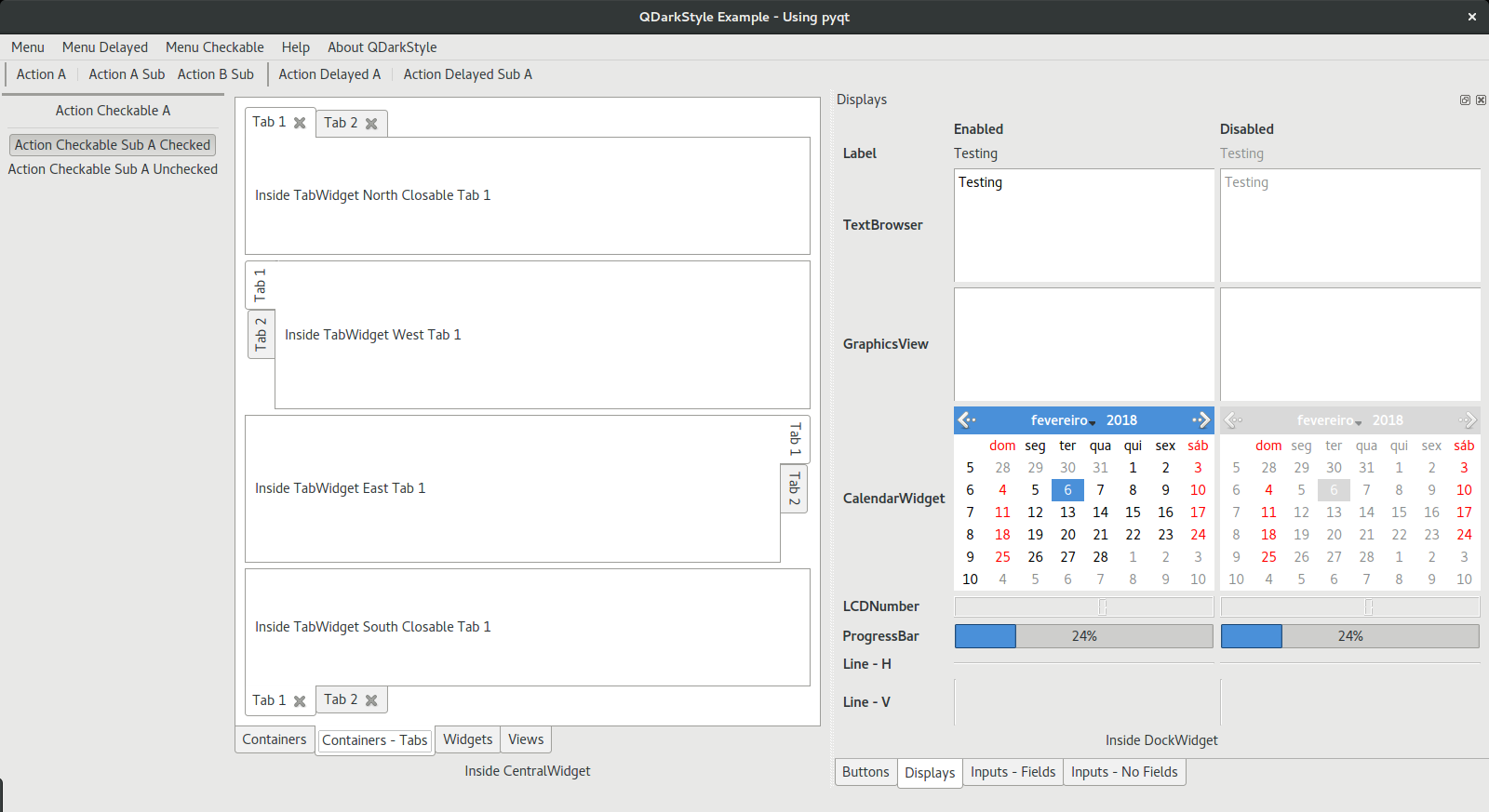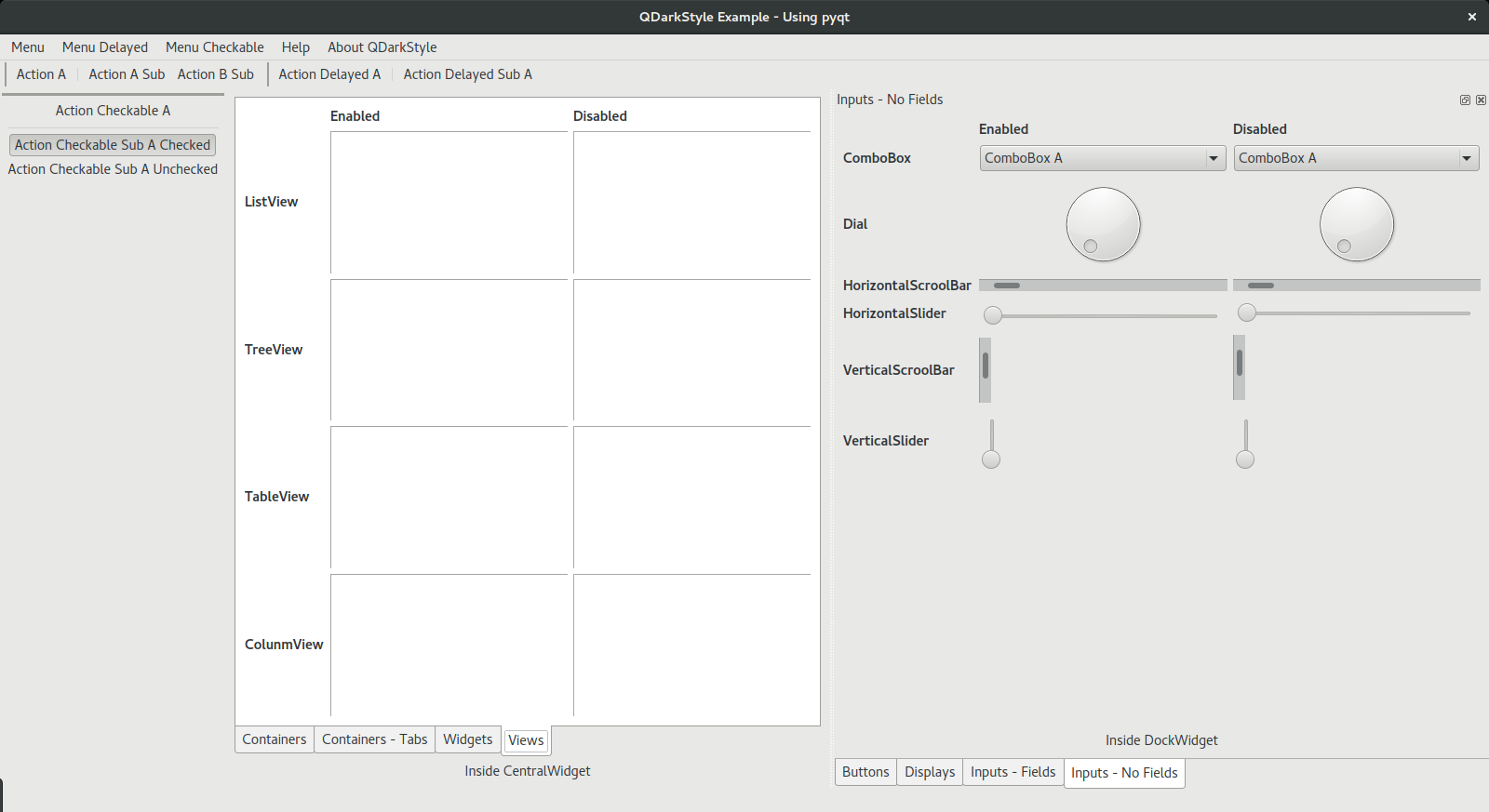QDarkStylesheet
A dark stylesheet for Qt applications (Qt4, Qt5, PySide, PyQt4, PyQt5, QtPy, PyQtGraph).
Installation
Python
From PyPI: Get the lastest stable version of qdarkstyle package using pip (preferable):
pip install qdarkstyle
From code: Download/clone the project, go to qdarkstyle folder then:
-
You can use the setup script and pip install.
pip install . -
Or, you can use the setup script with Python:
python setup.py install
C++
-
Download/clone the project and copy the following files to your application directory (keep the existing directory hierarchy):
- qdarkstyle/style.qss
- qdarkstyle/style.qrc
- qdarkstyle/rc/ (the whole directory)
-
Add qdarkstyle/style.qrc to your .pro file
-
Load the stylesheet:
QFile f(":qdarkstyle/style.qss"); if (!f.exists()) { printf("Unable to set stylesheet, file not found\n"); } else { f.open(QFile::ReadOnly | QFile::Text); QTextStream ts(&f); qApp->setStyleSheet(ts.readAll()); }
Usage
Here is an example using PySide:
import sys
import qdarkstyle
from PySide import QtGui
# create the application and the main window
app = QtGui.QApplication(sys.argv)
window = QtGui.QMainWindow()
# setup stylesheet
app.setStyleSheet(qdarkstyle.load_stylesheet_pyside())
# run
window.show()
app.exec_()
To use another wrapper for Qt, you just need to replace some lines. See examples bellow.
To use PyQt4, change two lines:
from PySide import QtGui
app.setStyleSheet(qdarkstyle.load_stylesheet_pyqt())
If PyQt5, more lines need to be changed because of its API, see the complete example
import sys
import qdarkstyle
from PyQt5 import QtWidgets
# create the application and the main window
app = QtWidgets.QApplication(sys.argv)
window = QtWidgets.QMainWindow()
# setup stylesheet
app.setStyleSheet(qdarkstyle.load_stylesheet_pyqt5())
# run
window.show()
app.exec_()
If your project uses QtPy or you need to set it programmatically, it is far more simple:
import sys
import qdarkstyle
import os
# set the environment variable to use a specific wrapper
# it can be set to pyqt, pyqt5, pyside or pyside2 (not implemented yet)
# you do not need to use QtPy to set this variable
os.environ['QT_API'] = 'pyqt'
# import from QtPy instead of doing it directly
# note that QtPy always uses PyQt5 API
from qtpy import QtWidgets
# create the application and the main window
app = QtWidgets.QApplication(sys.argv)
window = QtWidgets.QMainWindow()
# setup stylesheet
app.setStyleSheet(qdarkstyle.load_stylesheet_from_environment())
# run
window.show()
app.exec_()
It is also simple if you use PyQtGraph:
import sys
import qdarkstyle
import os
# set the environment variable to use a specific wrapper
# it can be set to PyQt, PyQt5, PySide or PySide2 (not implemented yet)
os.environ['PYQTGRAPH_QT_LIB'] = 'PyQt'
# import from pyqtgraph instead of doing it directly
# note that PyQtGraph always uses PyQt4 API
from pyqtgraph.Qt import QtGui
# create the application and the main window
app = QtGui.QApplication(sys.argv)
window = QtGui.QMainWindow()
# setup stylesheet
app.setStyleSheet(qdarkstyle.load_stylesheet_from_environment(is_pyqtgraph=True))
# run
window.show()
app.exec_()
There is an example included in the example folder. You can run the script without installing qdarkstyle. You only need to have PySide (or PyQt4 or PyQt5) installed on your system.
Snapshots
Here are a few snapshots comparing the use of QDarkStyle and the default style. Click in the image to zoom.
| Containers (no tabs) and Buttons | |
|---|---|
 |
 |
| Containers (tabs) and Displays | |
 |
 |
| Widgets and Inputs (with fields) | |
 |
 |
| Views and Inputs (without fields) | |
 |
 |
Changelog
Please, see CHANGES file.
License
This project is licensed under the MIT license. Imagens contained in this project are licensed under CC-BY license.
For more information see LICENSE file.
Authors
For more information see AUTHORS file.
Contribute
Most widgets have been styled. If you find a widget that has not been style, just open an issue on the issue tracker or, better, submit a pull request.


